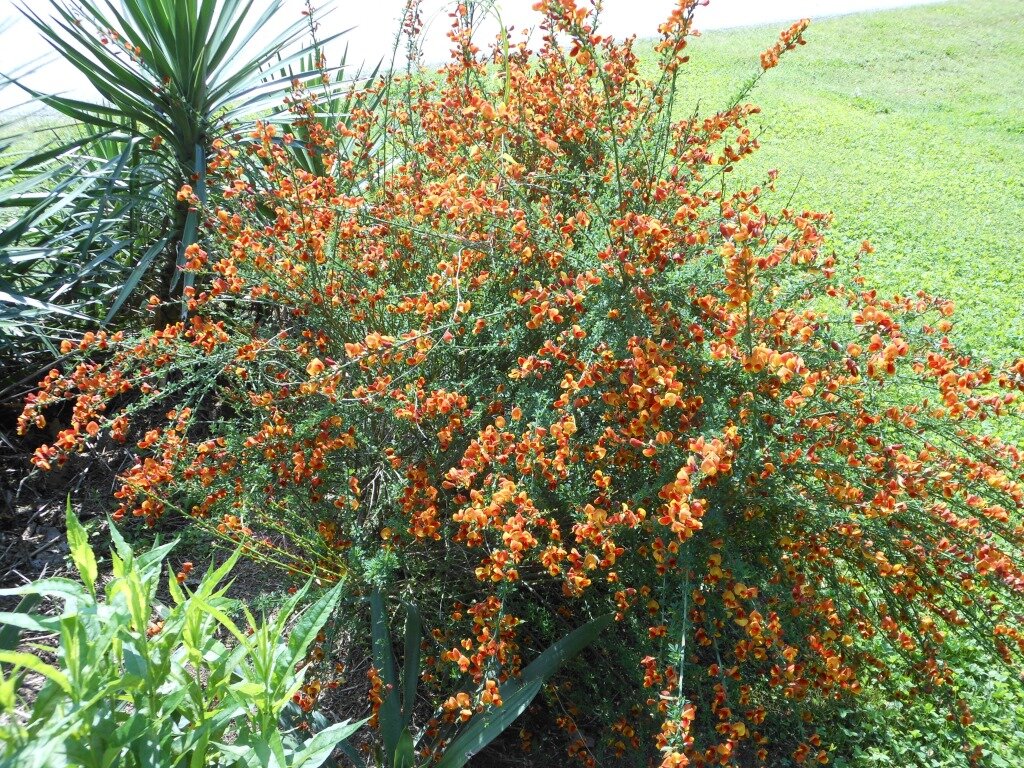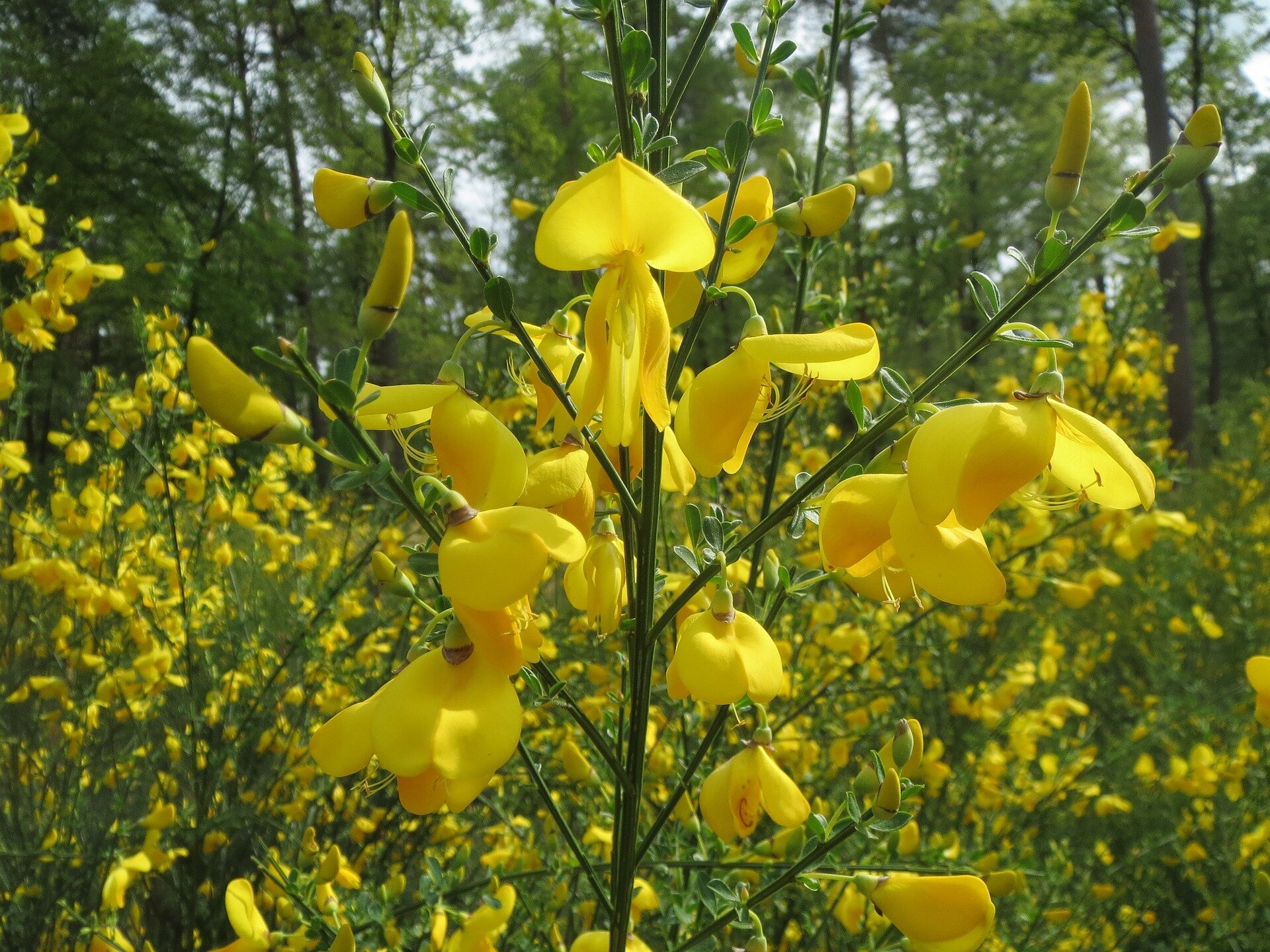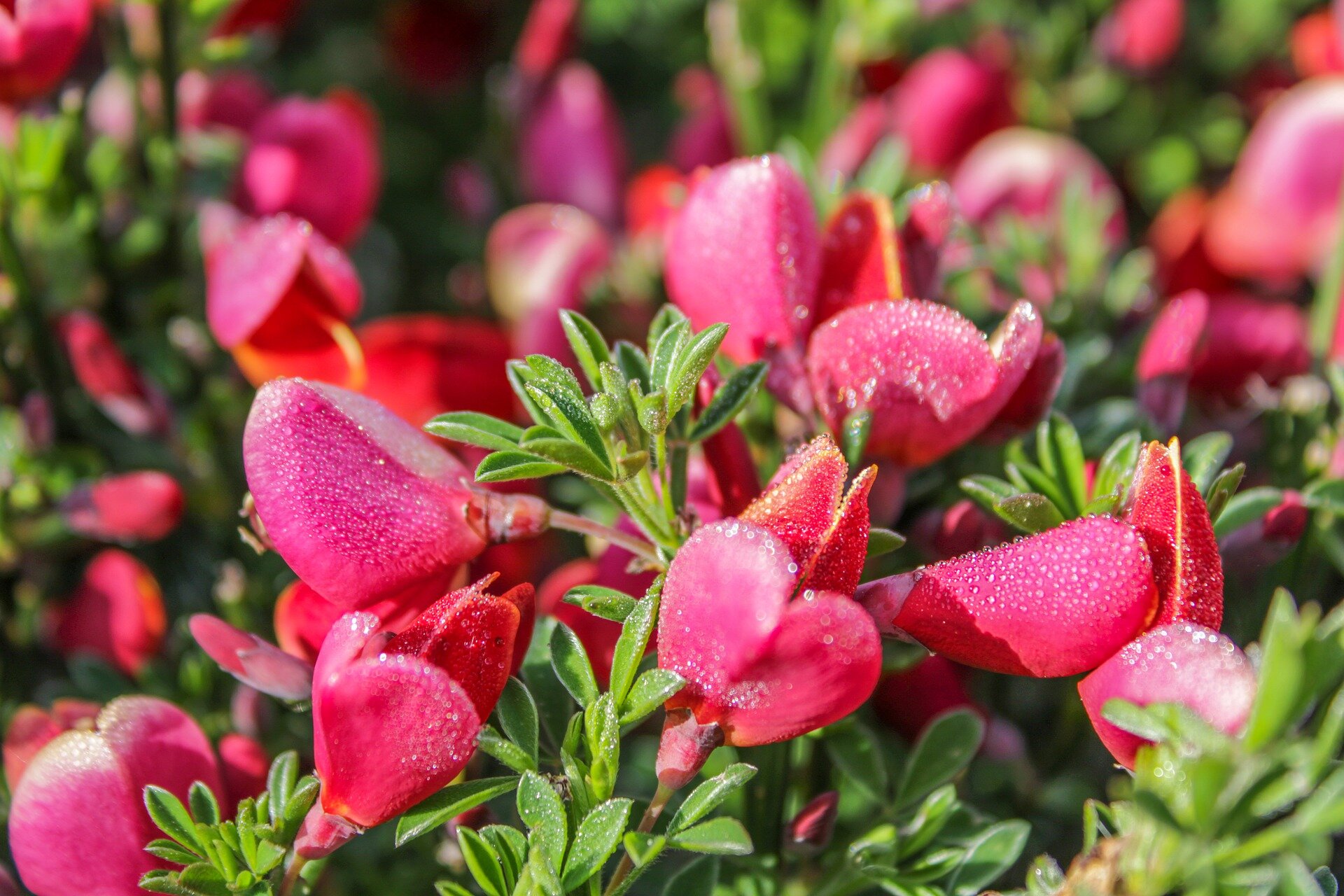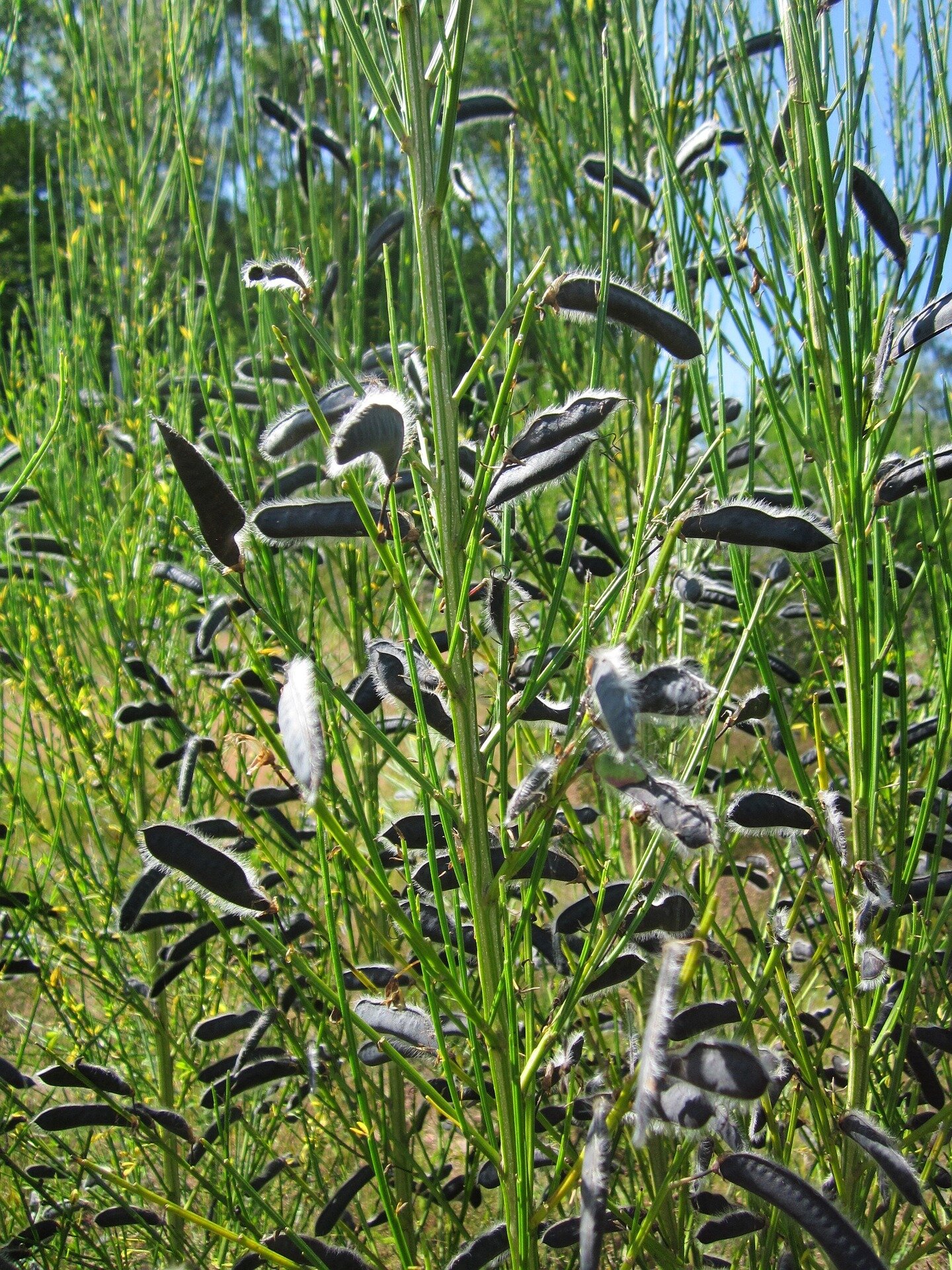The beautiful red and yellow flowers of Cytisus scoparius ‘Burkwoodii’
“Scotch Broom,” the common name for Cytisus, doesn’t conjure up images of splendor. It makes one think of Cinderella, sitting fireside and sweeping up embers. But when any genus has 27 species, 10 hybrids, and 10 named cultivars, it’s significant. In spring, the bright yellow blooms of common Scotch Broom light up waste areas and unmanicured roadsides. When not in bloom, the shrub is gangly, with a weeping habit and teeny tiny leaves clinging to angular green stems that resemble (in my mind) skinny green Twizzler candy. Some plants are evergreen (stems, usually) but most lose their leaves in winter. The shrub appears to be dead. In spring and in flower, it is one of Nature’s masterpieces.
Cytisus flowers resemble sweet peas or beans, to which family it belongs. Seed pods look like tiny black snow peas. Ripe pods burst with a pop and send seeds flying, giving rise to lots of offspring; brooms are listed as invasive in several states. If you don’t want the extras, pull them while they are small. The beautiful flowers ARE NOT EDIBLE. Leaves, stems are seeds are extremely toxic, and consumption can lead to death. Deer pass this one by.
Scotch Brooms are tough plants. They are hardy in zones 5-8. They thrive in full sun and heat, and ignore drought. While most are butter yellow, forms are also available in pale yellows, reds, pinks, and bi-colors. Cytisus scoparius 'Burkwoodii' put on quite a show in the Mary Snoddy garden, with gorgeous red/yellow bicolor blooms. In two years, however, it zoomed up to six feet tall and spent half the year looking like a collection of dead sticks. I pruned it severely (okay, I cut it off at ground level), and it promptly died. I decided to enjoy it in other peoples’ gardens thereafter. The weeping habit and frequent one-sidedness give it good potential for training to a trellis where it can be paired with an annual vine to conceal its post-bloom appearance.





